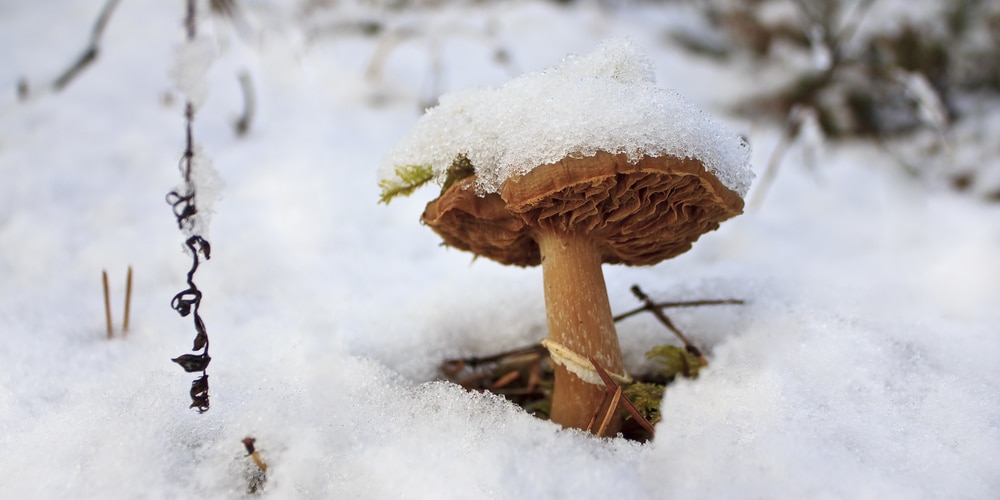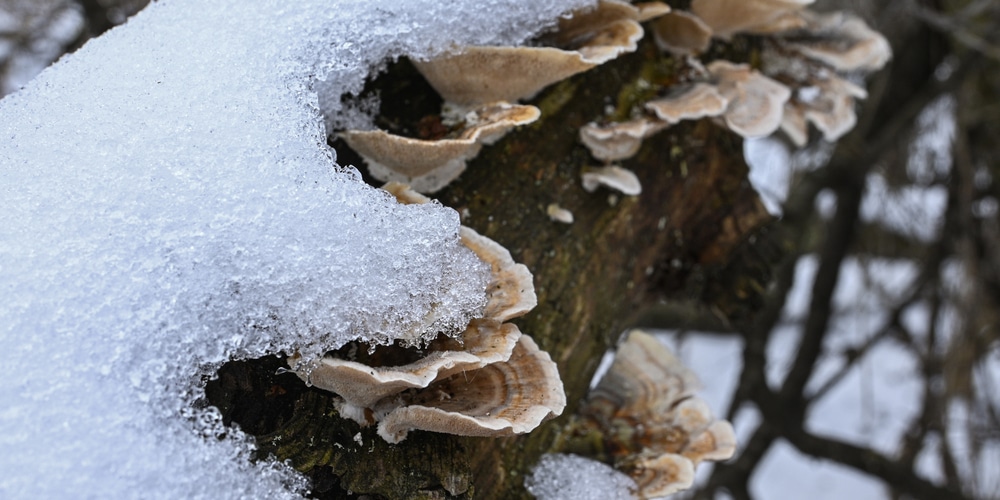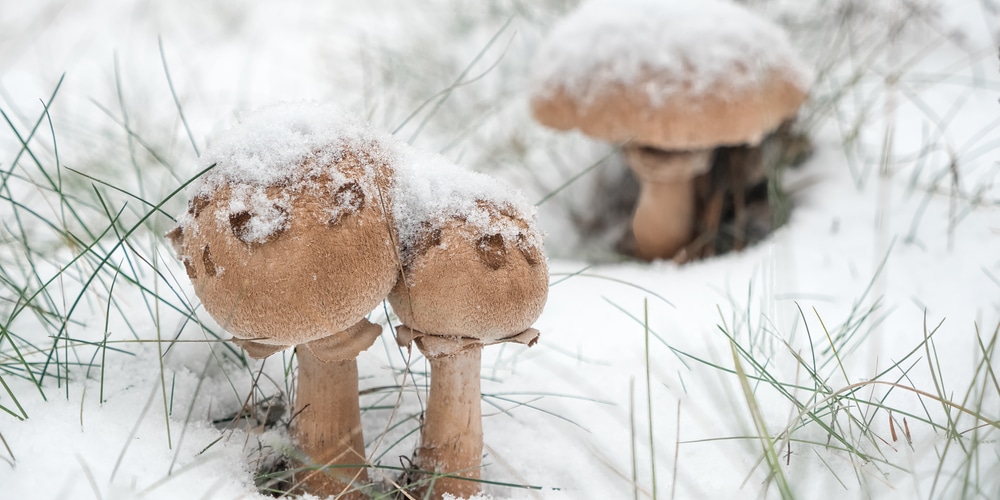Most plants enter a state of dormancy at the first sign of snow, but mushrooms seem to be an exception. The first thing you should ask, however, is ‘can mushrooms grow in snow?’
Mushrooms can certainly grow in snow, and there are several species that thrive in the winter cold. However, they should be near a food source, such as wood or near a tree in order to survive and not in the frozen ground, or else they perish.
Growing Mushrooms in Winter

Mushrooms, in general, won’t have to wait until the start of spring or end of frost in order to start producing fruit. While all the other plants stop and wait for the warmth, some mycelium work and break down plant matter for food. As temperature drops, the activity of mushrooms decreases but they do not enter a totally dormant state.
One thing to note is that you won’t likely see mushrooms sprouting on the ground during winter. However, in instances where there’s a mid-season thaw or rain the mycelium will do a restart and try to grow again.
While it’s possible to grow mushrooms in winter, the better way is to wait for warmer seasons or try to grow them indoors. You can get mushroom species that like the cold and dark and cultivate them during the time of year and enjoy greater success than those that prefer a warmer environment.
Mushrooms can grow easily without sunlight as they need nutrients from the soil. Also, remember that mycelium tends to grow much slower in winter compared to spring or summer.
How to Grow Mushrooms in Winter
The best ways to grow mushrooms in winter is to get a growing kit, some substrates or via inoculated logs.
Inoculated logs are wooden logs that contain mushrooms. This method requires you to place it in a dark and cool place so it won’t dry up and to cut down the size to encourage faster mushroom growth. You can either purchase them from reputable merchants or harvest them in the wild.
Experienced mushroom growers can purchase mushroom substrate or spawn for winter growing. The only downsides are that it has a short shelf life (only a month), and you will have to provide the right medium, such as hardwood dust, straw, coco coir and even manure depending on the mushroom species.
The last but easiest way to grow winter mushrooms is by purchasing a kit. All you need is to create an optimal growing environment and a source of light if you’re planning to put it indoors.
Once the grow light is installed you can cover the mycelium with the included tent and spray it every few days or so to keep the medium moist.
Outdoor mushrooms may have to be ‘overwintered’ if you want them to survive the freezing weather. Specially-made mushroom bags protect it from the extreme drops and will thaw once spring begins. Mycelium growth is activated through warm temperature and light, which naturally occurs once winter is over.
To overwinter successfully, you’ll need to store your mushrooms in a place that doesn’t get light and stays cold. Any break in this might get them to break the cycle prematurely.
Mushroom Varieties You Can Grow in Winter
To increase your chances of growing mushrooms successfully in the cold season you can turn to several varieties, including the Snowy Waxcap, Winter Chanterelle, Shiitake, Oyster, Herald of Winter, Scarlet Elf Cup and Velvet Shank mushrooms.
Shiitake Mushrooms are one of the most common and popular cold-growing mushroom species. It’s characterized by a creamy stem and brown, umbrella-shaped caps. The flavor is uniquely different and you can easily obtain a few spore samples to grow for your own.
Oyster Mushrooms are another favorite among mushroom enthusiasts. The species multiplies and grows quickly, and they’re not too particular about their growing environment. It thrives from November to February where others slow down.
Snowy Waxcap Mushrooms, in particular, like the cold and fruits starting fall and through winter. The same goes for Scarlet Elf Mushrooms. Winter Chanterelle is a worthy mention as they fruit from November to January and sport a natural fruit-like aroma.
Can Mushrooms Grow In Snow: Conclusion
Velvet Shank can withstand freezing temperatures, and it has yellow-brown caps that can brighten the usually white landscape of winter.
Related Article: Do Mushrooms Grow in Swamps?

